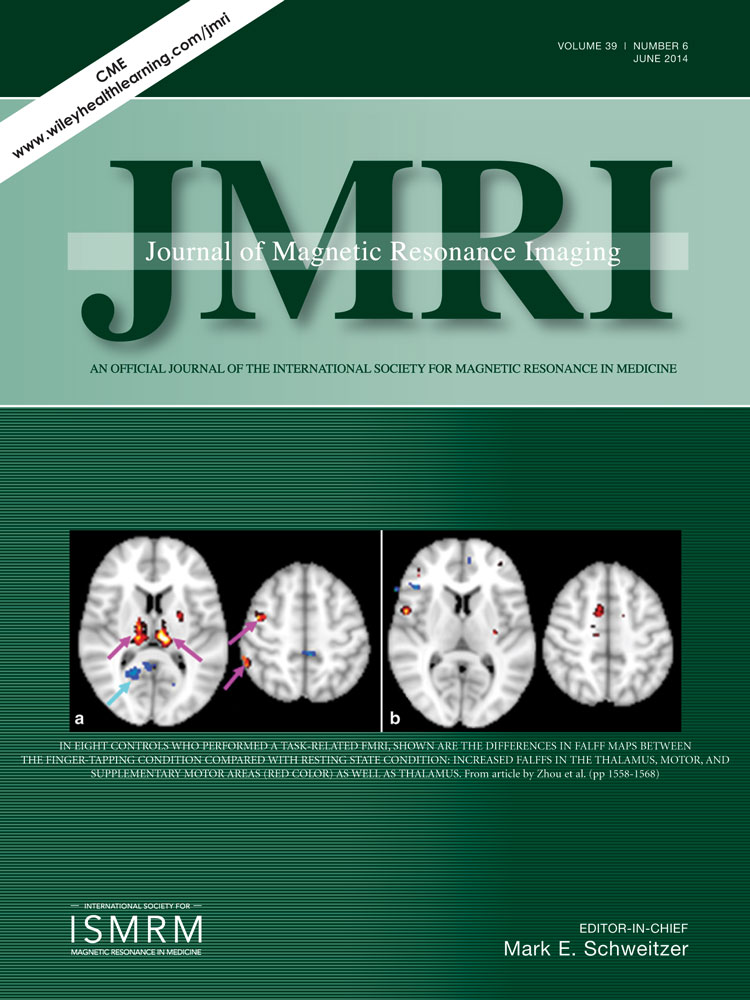Abnormal signal intensities of the seminal vesicles in a screening population
Abstract
Purpose
To investigate the incidence of abnormal signal hyperintensity on T1-weighted magnetic resonance imaging (MRI) of the seminal vesicles in a screening population in order to compare clinical indicators between subjects with and without signal abnormality.
Materials and Methods
Signal intensity of the seminal vesicles on T1-weighted images and clinical examinations were investigated in 3570 examinations of 1865 male subjects (mean age 54.8 years, range 23–86 years at the first examination).
Results
Abnormal signal hyperintensity was observed at least once in 32 subjects (1.7%). Subjects with the abnormality were significantly older (average age with and without the abnormality, 64.1 vs. 54.6, respectively, P < 0.001), and the incidence of abnormality increased with increasing age (0% for the age group <40, 0.3% for 40–49, 1.3% for 50–59, 2.9% for 60–69, 5.9% for 70–79, and 10.1% for >80). No significant difference was found in clinical indicators except for serum creatinine (1.10 vs. 0.84 mg/dL, P < 0.001). Of 12 subjects with abnormal signal intensity and follow-up data, the finding persisted on the same side for at least 11 months in seven subjects (58%).
Conclusion
Abnormal signal intensity of the seminal vesicles was observed in 1.7% of screening population, and the imaging finding in isolation is unlikely to have clinical significance. J. Magn. Reson. Imaging 2014;39:1426–1430. © 2013 Wiley Periodicals, Inc.




